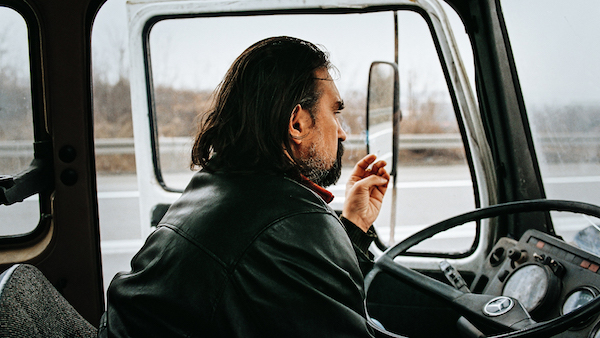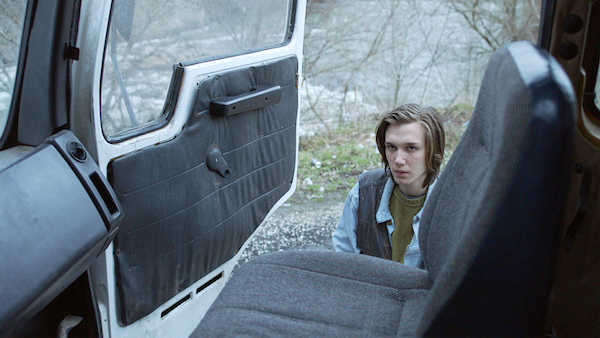A solemn road movie that builds suspense from what it doesn’t show.

Set in what was Yugoslavia during the war between Serbian armed forces and Kosovo-Albanian separatists, The Load depicts people struggling in a world that no longer makes sense. An impressively drab production design and defiantly grim cinematography add to the film’s overwhelming mood of gloom. What rescues The Load are the tiny steps its characters take to save their dignity.
Writer and director Ognjen Glavonić explored the story behind this film in the documentary Depth Two (2016). In The Load, his feature debut, he chooses to obscure the narrative, hinting at what happens rather than offering a clear story line.
Vlada (in a strong performance by Leon Lučev) is introduced riding in a van through war-torn Kosovo. He receives instructions about cargo he is to deliver by truck to Belgrade. Once he starts, he is not to stop. He is not to deviate from his route. And he is not to inspect the cargo. (He can’t anyway: the doors to his panel truck are padlocked shut.)
Cinematographer Tatjana Krstevski keeps the camera in close on Vlada, following right behind as he walks, staring doggedly as he drives. Tied to the periodic warnings issued in Glavonić’s screenplay, the camerawork builds considerable suspense as viewers wait for something terrible to happen.
Only it doesn’t—or at least not in the ways viewers conditioned by Hollywood narratives expect. Critics might bring up The Wages of Fear, and in one interview Glavonić cited Sorcerer approvingly. But The Load is actually a road movie, with Vlada encountering characters ranging from mechanics to a bridal couple to a young runaway named Paja (Pavle Čemerikić) who bums a ride.

What gives the film its harrowing sense of doom is the war hanging over everyone. Burning cars block bridges, phone lines are cut, leaflets rain down from NATO bombers. It’s a vision of hell with no reason or end, and no one can escape its consequences.
Glavonić has built a credible version of a 1999 Yugoslavia at war with almost no resources. His script may flag at times, and the desolate imagery can grow wearisome. The Load veers from Soviet miserablism to the dark worlds of Ida and Cold War. But Krstevski’s cinematography, so rigorous in the opening scenes, loses some focus as the film proceeds. Similarly, Glavonić’s precise plotting becomes less intense as the story spreads out.
The film’s characters, however, make every scene worthwhile. Whether reliving the past, sharing empty dreams of the future, or dealing with the crushing realities of the present, they merit our attention and concern.


